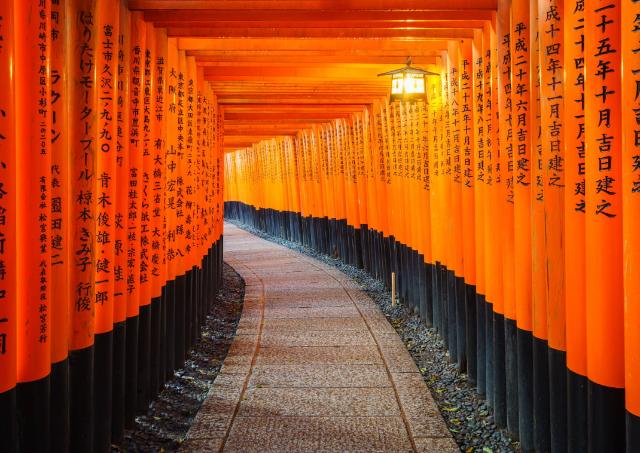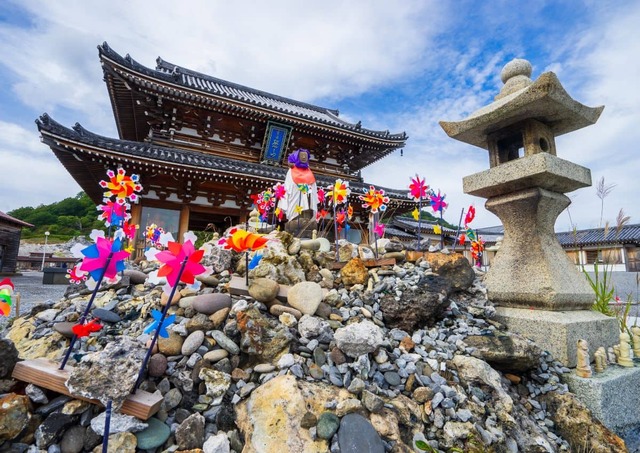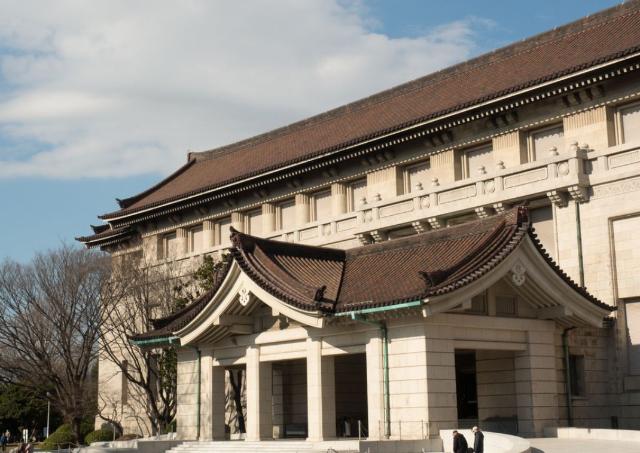Top 5 Must-See World Heritage Sites of Japan
The scenery of Japan stirs us from inside like a sugar spoon in hot tea. It inspires us from afar, lures us to its land, and takes our breath away one visit after the other. While a single trip may not be enough to see it all, Japan, like many other countries, has broken it down into a list of most desirable places via the stamp of approval from UNESCO.
UNESCO’s World Heritage Sites are badges of the highest honor for the most beautiful, significant, or both, places on the planet. Japan happens to be in the top ten list of countries with the most of these sites. Convenient, right?
While Japan’s list of sites is ever-growing, we’ve broken it down into the absolute must-see of the current must-sees. As they’re all worth a stop in, we feel that these top five are what should not be ignored. Let’s get to it.
5. Historic Monuments of Ancient Nara
As the capital of Japan for most of the eighth century, much has been left behind and preserved in the capital of Nara prefecture, Nara City. Not far from popular metropolis, Osaka, Nara is an ancient city with only a tenth of the population of its enormous neighbor. Here, temples and shrines mix along aged pathways joined by a rather uncommon type of free-roaming inner city creature.
Nara has become synonymous with its intermingling deer population. Well over a thousand deer peruse the streets of Nara City begging tourists for purchasable deer crackers. They’ve gained social media fame for having learned to bow to tourists in exchange for snacks. They’re a delightful sight among the dated buildings and pagodas and are considered a national treasure.
Aside from these adorable, occasionally “hangry,” city mascots, Nara is a city of bygone wonder. The unblemished structures of Kofuku-ji, for example, are loved by local and international tourist alike. Meanwhile, the 800-year-old wooden gate at the entrance of Todai-ji is a popular photo stop before strolling into the grounds of Todai-ji itself – an enormous temple where the largest bronze Buddha statue in Japan resides. It’s as unmissable as it is gorgeous.
4. Himeji Castle
While Japan is dotted with castle keeps all over the country, only twelve have managed to make it through the country’s history of civil wars, world wars, and natural disasters. While any castle is worth a visit, reconstructed or otherwise, Himeji Castle in the city of the same name in west Japan, not far from Kobe or Osaka, is the only fortress to be awarded the UNESCO title.
Added in 1993, Himeji Castle’s World Heritage stamp of approval is undeniably deserving, and it’s clear even upon first glance. The magnificent glowing white keep can be seen from the city’s main station which makes it an easy landmark to visit even on foot. As seen from the courtyard, the castle is as massive as it is ravishing. This over 400-year-old beauty can be entered and summited, and the view from the top is as stupendous as it is from the bottom. While the castle’s inner stairs may be steep, a stroll around the castle garden, Koko-en, is easy on the mind and knees. Loaded with an abundance of fauna, a koi pond, and a traditional tea house, the entire castle grounds are worth a stop in and is just a handful of literal skips from a bullet train station.
3. Mt. Fuji
Without a doubt, Mt. Fuji is the most well-known symbol of Japan. While it is a volcanic mountain, Fuji made, specifically, UNESCO’s Cultural List due to its major influence on historical art and literature. While it may be tough to find it totally cloudless, a clear sight of Fuji and its peak, snowy or otherwise, is sure to steal the breath from its observers. While far more active in centuries past, Mt. Fuji sits on the borders of Yamanashi and Shizuoka prefectures these days without much drama. Only a few bullet train stops away from Tokyo, many of the Kanto metropolis’s people seek out pristine views of the volcano from hot spring resort areas like Hakone, Atami, or spots around Fuji’s lakes. People in Shizuoka prefecture often take in views of Fuji from the Shimizu Port area or its adjacent peninsula beach, Miho Masaki Beach. Mt. Fuji can also be climbed and summited but only in the summer when Fuji is without its snow cap. Commonly only a day and a half hike to the top, trekkers of all ages conquer the course annually with most hikers’ goals being to see the sunrise over the cloud sea beneath the mountain. Sounds like a dream, yeah?
2. Itsukushima Shinto Shrine and Mt. Misen
A mix of man-made and natural, this World Heritage site in Hiroshima prefecture consists of practically the entire island. The focus, however, clearly belongs to Itsukushima Shrine and its globally recognized floating red gate, the Great Torii.
While the gate itself doesn’t float, it’s commonly referred to as such since it appears to float on the surface of the sea when the tide is in, but it becomes accessible on foot when the tide goes out. Meaning that tourists often congregate beneath it when the sea recedes. Not before visiting the shrine itself, of course, which includes a series of tranquil boardwalks that sit just over the water. Any view from the boardwalk railings is a guaranteed million-dollar one.
Near the end of the Heian Period, well over 800 years ago, Itsukushima (sometimes called Miyajima) was the island selected as the Taira family shrine site. Thus, grand seaside shrine halls were built and have been maintained to this day. All of these exist beneath the gaze of the towering Mt. Misen which has a reachable peak either from a hike up, via ropeway, or a combination of the two. The views of the Seto islands from the summit are otherworldly. While Misen would be worth the visit alone, it certainly is, at the very least, the cherry on top of this UNESCO sundae.
While strolling through souvenir and snack streets, it’s impossible to ignore the free-roaming deer that inhabit the island. Much like Nara, Itsukushima is full of dainty deer (although much less pushy than their Nara cousins). While not expecting treats from visitors, the deer are a sprinkle of delight while perusing the area.
While you’re in the Hiroshima area, you may find it opportune to check off another UNESCO site. We absolutely recommend visiting the Hiroshima Peace Memorial area of central Hiroshima City. This includes the Peace Memorial Park – a riverside green area dedicated to the history and awareness of nuclear war. As the site of the first atomic bomb ever dropped on a city, Peace Park also possesses the Genbaku Dome, often called the Atomic Bomb Dome – the skeletal remnants of an exhibition hall left standing after the explosion.
While the dome is one of several symbols and monuments dedicated to that infamous day, the Peace Memorial Museum details the immediate effects of the bomb and how it affected residents in the years following. An emotional tour, the museum has many artifacts on display from bomb victims.
Each August 6th, international diplomats and government officials visit the park for a Memorial Day morning ceremony to honor the victims that’s followed by an afternoon of light-hearted games and activities dedicated to the promotion of world peace.
1. Yakushima
An island located between Kagoshima in the mainland and the islands of Okinawa, Yakushima is a place of natural splendor. Covered in mountains of ancient cedar forests, Yakushima is regularly visited by those itching to tie up their hiking boots.
The circular island was named a UNESCO Natural World Heritage Site because of its incredible ecosystem. Much of the medieval forests of the island, old as they are stunning, are covered in moss and fern that has created an environment of aesthetic inspiration – famously influencing animator Hayao Miyazaki on his film Princess Mononoke. The island is also an important stop for loggerhead sea turtles and the native macaques and Yakushima sika deer.
With only a few thousand inhabitants on the island, Yakushima is mostly dedicated to the nature it beholds. The island’s forests have multiple courses for hikers of all skill level and time limit – a few of which requiring camping overnight to finish. The Kokemusu Forest has a popular course that includes the Shiratani Unsui Gorge and ends at Drum Rock – a large rock attached to the mountain that overlooks much of the island and makes for a rewarding sight.
Yakushima can be reached by air or ferry and can be traversed by bus or car rental. However you choose to get around, it’s guaranteed to be an unforgettable experience.
Got your list in hand?
See a great deal of the sites on this list and more on our Highlights of Japan tour!
Coming with the goal of seeing as many UNESCO sites as possible? Let us help you tailor-make a tour that meets your needs!




